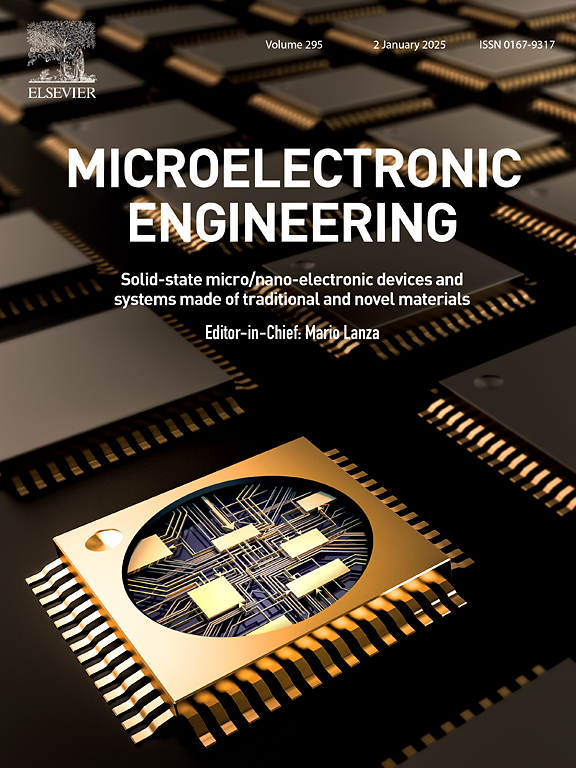A simulation study of grayscale ice lithography for spiral phase plates in near infrared wavelengths
IF 3.1
4区 工程技术
Q2 ENGINEERING, ELECTRICAL & ELECTRONIC
引用次数: 0
Abstract
Grayscale electron beam lithography (EBL) in amorphous solid water (ASW), known as ice lithography (IL), and in Polymethylmethacrylate (PMMA), respectively, for spiral phase plates (SPPs) are numerically simulated by using commercial software: Beamer, Tracer and Lab, aiming at characterizing the two lithography methods for three-dimensional nanostructures. It is found that IL is able to generate 3D SPP profiles with smoother surface than conventional EBL. Further simulation using finite difference time domain (FDTD) method is also conducted to investigate the effect of the surface roughness on the wavefront characteristics of the transformed vortex beams. Clear influence on the light regulation ability by surface roughness is found through comparison between ASW-based and PMMA-based SPPs, indicating that IL has better performance than conventional EBL in patterning 3D SPP structures. This research indicates that IL should be prospective for manufacturing high-quality micro and nanostructures with 3D profiles for modern optical devices.

近红外波段螺旋相板灰度冰光刻的仿真研究
利用商业软件Beamer、Tracer和Lab对螺旋相板(SPPs)在非晶固体水(ASW)中的灰度电子束光刻(EBL),即冰光刻(IL)和聚甲基丙烯酸甲酯(PMMA)中的灰度电子束光刻(EBL)进行了数值模拟,旨在表征这两种三维纳米结构的光刻方法。研究发现,与传统的EBL相比,IL能够生成表面光滑的三维SPP剖面。利用时域有限差分(FDTD)方法进行了进一步的仿真,研究了表面粗糙度对转换后涡旋光束波前特性的影响。通过对asw基SPP和pmma基SPP的比较,发现表面粗糙度对SPP的光调节能力有明显的影响,表明IL在3D SPP结构的图像化方面比传统的EBL有更好的性能。这一研究表明,IL在现代光学器件中具有高质量的三维轮廓微纳米结构的制造前景广阔。
本文章由计算机程序翻译,如有差异,请以英文原文为准。
求助全文
约1分钟内获得全文
求助全文
来源期刊

Microelectronic Engineering
工程技术-工程:电子与电气
CiteScore
5.30
自引率
4.30%
发文量
131
审稿时长
29 days
期刊介绍:
Microelectronic Engineering is the premier nanoprocessing, and nanotechnology journal focusing on fabrication of electronic, photonic, bioelectronic, electromechanic and fluidic devices and systems, and their applications in the broad areas of electronics, photonics, energy, life sciences, and environment. It covers also the expanding interdisciplinary field of "more than Moore" and "beyond Moore" integrated nanoelectronics / photonics and micro-/nano-/bio-systems. Through its unique mixture of peer-reviewed articles, reviews, accelerated publications, short and Technical notes, and the latest research news on key developments, Microelectronic Engineering provides comprehensive coverage of this exciting, interdisciplinary and dynamic new field for researchers in academia and professionals in industry.
 求助内容:
求助内容: 应助结果提醒方式:
应助结果提醒方式:


